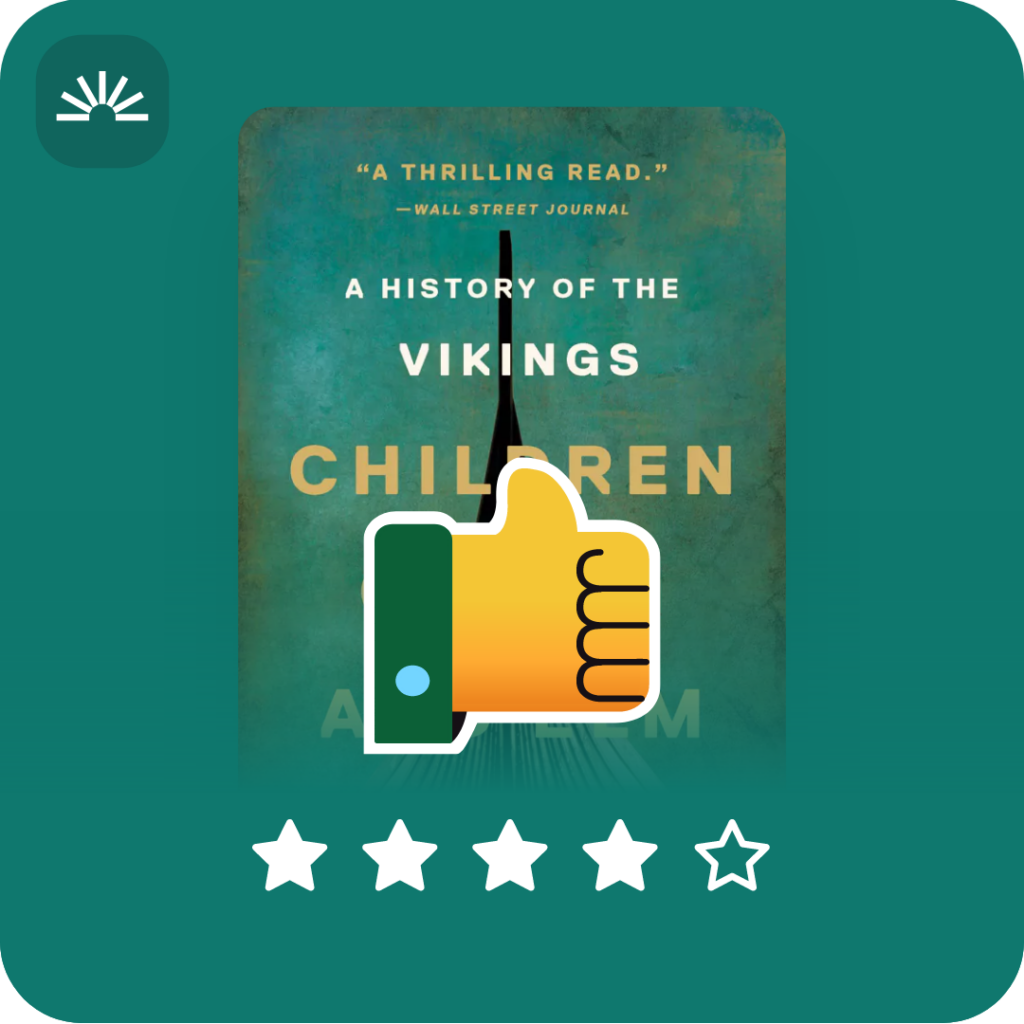
“Children of Ash and Elm: A History of the Vikings” by Neil Price offers a comprehensive and detailed exploration of the Viking Age, spanning from their earliest origins to their lasting impact on the modern world. Price delves deep into Viking life’s social, cultural, and political aspects, presenting a nuanced view that challenges many popular misconceptions.
The book is not a novel but a historical account, richly detailed and engaging. Price presents a narrative that is both scholarly and accessible, weaving together archaeological findings, historical texts, and linguistic studies to create a vivid portrayal of the Viking world. The main characters in this context are the Vikings themselves, portrayed not just as raiders and warriors, but as traders, explorers, and settlers. The setting encompasses the vast expanse of the Viking influence, from the Nordic countries to the far reaches of the North Atlantic and the coasts of North America.
Price’s writing style is eloquent and fluid, making the complex history and culture of the Vikings approachable for general readers while still offering depth and insight for scholars. In this case, the character development applies to the portrayal of the Viking society and culture. Price succeeds in humanizing the Vikings, presenting them as a complex and multifaceted people with their own values, beliefs, and social structures.
One of the most striking aspects of “Children of Ash and Elm” is its ability to bring the Viking world to life through vivid imagery and descriptive language. Price uses a variety of sources to reconstruct the Viking Age, allowing readers to immerse themselves in the era. The book does not shy away from the more brutal aspects of Viking life, including their rituals, warfare, and social practices, providing a balanced and unvarnished view.
Emotionally, the book is engaging and thought-provoking. It evokes a sense of wonder at the Vikings’ achievements and their resilience and a reflective consideration of their impact on the societies they encountered. Price’s analysis of Viking mythology and religion adds a fascinating layer to the narrative, revealing their actions’ spiritual and philosophical underpinnings.
- A “thrilling” (Wall Street Journal) history of the Vikings by a pre-eminent scholar
- Price, Neil (Author)
- English (Publication Language)
- 640 Pages – 09/13/2022 (Publication Date) – Basic Books (Publisher)
Through “Children of Ash and Elm,” Price communicates a theme of complexity and contradiction in the Viking age, challenging the stereotype of Vikings as mere barbaric raiders. He successfully conveys their culture’s richness, contributions to trade and exploration, and lasting impact on European history.
The book’s primary strength lies in its thorough research and ability to present a nuanced view of the Viking era. However, some readers might find the level of detail overwhelming, especially those looking for a more casual read.
I would highly recommend “Children of Ash and Elm” to history enthusiasts, particularly those interested in the Viking Age and scholars in the field. It offers a valuable perspective that enriches our understanding of a crucial period in European history.
Comparing it to other works on Viking history, Price’s book stands out for its depth of research and engaging narrative. It complements other historical accounts by providing a more rounded and humanized view of the Vikings.
Rating: 4 out of 5 stars. “Children of Ash and Elm” is a must-read for anyone interested in the Vikings, offering a comprehensive, insightful, and beautifully written account of their history and legacy.
The Eclectic Educator is a free resource for everyone passionate about education and creativity. If you enjoy the content and want to support the newsletter, consider becoming a paid subscriber. Your support helps keep the insights and inspiration coming!

















